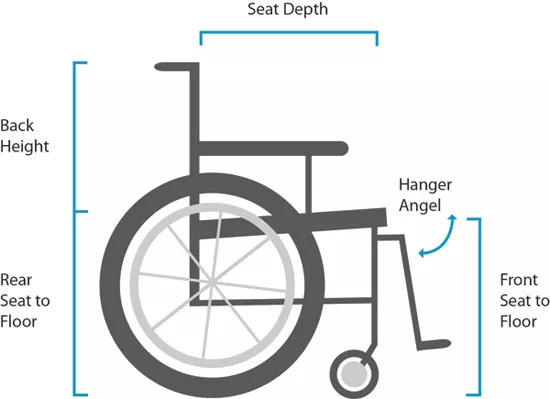XO-101 Stand-Up Wheelchair
The XO-101 Series Stand-Up Wheelchairs are not only the best priced Standing Wheelchairs on the market but now actually have as many features as those that cost 5 times as much! The XO-101 series now includes standard features such as a Nickel Metal Hydride Battery, Memory Foam Back Cushions, Anti-Tippers, Padded Knee Support, Flip Up Footplates, Full length Flip Back Armrest with standing toggle switch, as well as Seat & Back Adjustments.
Demonstration Videos
SPECIFICATIONS
| Product Measurements | |
|---|---|
| HCPCS Code | N/A |
| Seat Width | 16 inch., 18 inch. |
| Seat Depth | 18 inch., 19 inch., 20 inch. |
| Armrest Height | 9 inch. |
| Seat Height | 20 inch. |
| Back Height | 16 – 19 inch. |
| Overall Height | 35 inch. – 55 3/4 inch. |
| Overall Width | 24 1/2 inch., 26 1/2 inch. |
| Overall Length | 39 1/2 inch. |
| Weight Capacity | 250 lbs. |
| Shipping Dimensions | N/A |
| Weight Capacity | 250 lbs. |
| Shipping Dimensions | 33″ L x 31″ H x 13″ W |
Due to our commitment to continuous improvements, Karman Healthcare reserves the right to change specifications and design without notice. Further, not all features and options offered are compatible with all configurations of the wheelchair.
USER MANUAL
User Manual
FREQUENTLY ASKED QUESTIONS
Helpful Hints
Product Features
Only 56 lb. total weight with Battery
6061 T-6 Aircraft Grade Aluminum Frame
Silver Powder Coating
Clear See Through Contoured Side Panel
Lloyd High Powered Controller Box
Nickel Metal Hydride Battery (no extra charge included)
Easy Push Button for Stand-Up Position
Quick Release Detachable Rear Wheels
Thicker Corrosion / Wear Resistant
Breathable Nylon Upholstery Seat and Back w/ Pouch / Zipper Fanny Pack
24″ X 1″ High Profile Polyurethane Tires
8″ Front Flat Free Casters
Stand-up Freeze Prevention Special Control Design
Total Up/Down Cycles: ~250 (depending on weight of user)
Padded Flip-back Armrest


Seat Depth
Measure from the most posterior point of the body to the inside of the knee, minus at least two inches. Some prefer more leg overhang to make room for their hand when lifting their leg.
Back Height
Measured from the seat base to the top of the wheelchair back. Depends on how much upper back support is needed, and also affects freedom for the upper body to rotate.
Rear Seat to Floor
Measurement from the ground to the rear seat edge. Relative to the front seat-to-floor dimension, this determines the rearward slope (“dump” or “squeeze”) of the wheelchair seat.
Hanger Angle
Determines how far the toes extend away from the body, measured from the horizontal. A tighter angle allows the wheelchair to turn around in less space. Depends in part on ability of the knee to bend towards the perpendicular.
Seat Width
Determined by the widest point of the body from knee to hip, plus an inch to ensure room to move. Consider bulk of clothing, particularly a heavy winter coat, if relevant.
Wheel Camber
Angle of the wheel relative to the vertical. More camber improves stability and agility, but also limits ability to pass through narrow spaces. A typical daily wheelchair uses three degrees of camber.
Front Seat to Floor
Measure the leg from the back of the knee to the sole of the foot. Then subtract the thickness of the cushion when it is compressed. Next, add a minimum of two inches for footrest clearance. Do not add the footrest clearance if the wheelchair will be foot-propelled.
Footrest Width
Measure from the inside of each leg-rest tubing the distance or desired distance between legrests.
Center of Gravity
Measure from the front of the seat back post to the center of the rear axle.
Seat to Footrest Length
Measure from the edge of the seat upholstery to the top rear of the footrest.
RELATED ITEMS
Sunrise Manual Wheelchairs
QUICKIE Manual Wheelchairs Cutting-edge wheelchair technology to keep Read more...
Karman VIP-515-TP Light Foldable Tilt-in-Space Transport Wheelchair
Karman VIP-515-TP Light Foldable Tilt-in-Space Transport Wheelchair The Karman Read more...
HD Equalizer Tilt Chair – Pacesaver
BOSS HD Equalizer Bariatric Tilt System for Power Chairs Read more...
Quickie® Xtender® electric assist wheelchair
Quickie® Xtender® Wheelchair An electric assist wheelchair accessory Read more...
Quickie® 5R Wheelchairs Instructions
The Quickie® 5R - Wheelchair The 5R is designed Read more...
Quickie 7 Series Wheelchairs Instructions
QUICKIE 7R and 7RS The QUICKIE® 7 Series redefines Read more...
Invacare Mariner Rehab Shower Chair Instructions
Invacare Mariner Rehab Shower Commode Chair A lightweight aluminum Read more...
XO-101 Stand-Up Wheelchair Instructions
XO-101 Stand-Up Wheelchair The XO-101 Series Stand-Up Wheelchairs are Read more...
Vipamat Hippocampe Beach & All-terrain Wheelchair Instructions
Vipamat Hippocampe Beach & All-terrain Wheelchair All terrain: Since 2002, Read more...
HumanCare I-400/700 Convertible Instructions
Human Care’s Convertible Chair A no-lifting multi-functional device Read more...
VIP515 Tilt-In-Space Wheelchair Instructions
VIP-515 Wheelchair Invacare A revolutionary lightweight folding tilt in Read more...
Drive Medical Cougar Lightweight Wheelchairs Instructions
Drive Cougar Ultralight Aluminum Wheelchair Drive Cougar Read more...